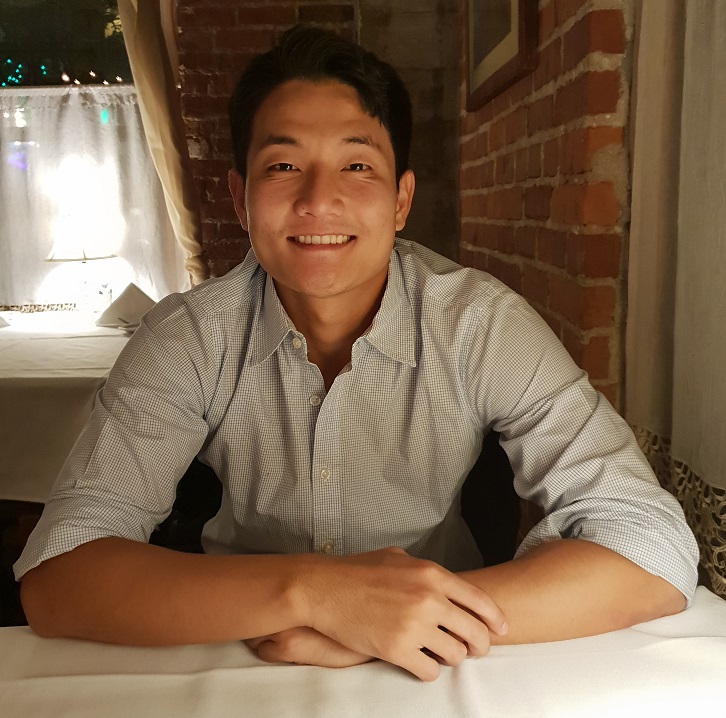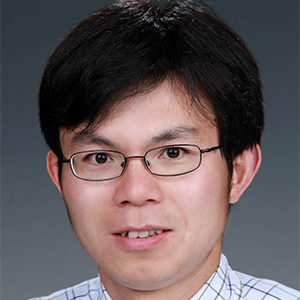Yuefan Ji
Lithium-ion batteries are key to electrifying transportation. However, the nature of the current lithium ion battery technology is unsafe. Researchers are working on the development and improvement of battery techniques to manufacture high performance and safe batteries. Importantly, lithium ion batteries are a closed and complicated system, which makes it impossible to open and diagnose the commercialized battery without damaging it. Fortunately, electrochemical impedance spectroscopy (EIS) is available for us to diagnose the lithium ion battery non-invasively. EIS is powerful, but has not been fully understood. Thus, my works focus on the theories and applications of EIS in providing more insights on battery diagnostics and...
Seancarlos Gonzalez
Renewable energy technologies have gained use as a means of combating the causes of global climate change. Nevertheless, even with 100% renewable energy, chemicals manufacturing will still produce carbon dioxide emissions. Current gas separation techniques are both energy and cost intensive, meaning that we need affordable technologies that can scrub CO2 from exhaust streams. My research focuses on developing more effective gas separation membranes that can be used to separate CO2 from a mixture of other gases. Specifically, my work uses reactive vapors to grow metal organic frameworks (MOFs) in situ within polymer membranes. The incorporation of these MOFs has already been shown to...
Yuri Choe
My project is to create hybrid organic-inorganic membranes with greater stabilities at high temperatures and/or with organic solvents. To reduce the energy consumption and associated emissions from industrial thermal chemical separations, switching to membrane separations could reduce energy required by up to 90%. However, commercially available membranes are unstable in many industrial applications. To produce more resilient membranes, I am exploring the use of vapor phase infiltration (VPI) to enhance stabilities of separation membranes and enable its integration into current industrial manufacturing processes without the need for significant changes. My goal is to develop new VPI process chemistries and test properties of the synthesized...
Duncan Reece
Hydrogen is being developed more and more as a sustainable fuel. The combustion of hydrogen produces no carbon emissions and it is suitable for use in gas turbines, internal combustion engines, and fuel cells. However, the primary source of hydrogen is fossil fuels. The focus of my research is developing new ultra-thin films with highly specific structures and properties to improve the efficiency and reaction kinetics of hydrogen production from water electrolysis. Yet, water electrolysis is still too energy-intensive and expensive to compete with current methods. Density functional theory has shown that the slow kinetics of the oxygen evolution reaction, the rate-limiting step of electrolysis, can...
David S. Bergsman
Assistant Professor, Chemical Engineering The Bergsman group tackles emerging challenges in water, energy, and sustainability using nanomaterials. Through the design of ultrathin nanostructures and coatings, we create membranes that can separate contaminants from water, catalysts that drive difficult chemical reactions, and materials enable the formation of previously unobtainable device architectures. We combine atomically-precise synthesis, advanced characterization approaches, and data science tools to better understand the behavior of molecules in these uniquely small systems and use that understanding to invent processes that can enable the use of clean energy technologies at scale. Email | Website | LinkedIn Recent Publications David S. Bergsman, Bezawit A. Getachew, Christ B. Cooper, Jeffrey...
Kevin Lee
Nanostructured alloying electrode materials such as antimony, germanium, and silicon are highly promising materials that offer potentially low-cost, high-power-density, and high rate capability. However, developing a strong understanding of the morphology and tying the morphology to performance is difficult because electrodes are typically made up of a disordered mixture of active material, polymeric binder, and conductive carbon. Therefore, the goal of my research is to utilize in-situ electrochemical techniques such as the galvanostatic intermittent titration technique (GITT) and electrochemical impedance spectroscopy (EIS) to fully understand how alloying type nanomaterials behave in multicomponent electrochemical systems such as batteries. The investigated materials will be synthesized using...
Nada Naser
My research focuses on the integration of solid binding peptides (SBPs) within the framework of proton-transporting transmembrane proteins to create new devices and materials that will enable next-generation energy systems. SBPs are combinatorially selected peptides that bind with high affinity to inorganic materials. By genetically inserting these peptides at various sites of functional transmembrane proteins (e.g., light-activated ion transporters), and by exploiting emerging techniques to isolate and stabilize the resulting chimera in polymeric nanoparticles, I intend to fabricate new devices to control charge transfer and chemical potential across interfaces in response to light illumination. Additionally, I am interested in developing responsive materials in which...
Preetham Paul Sunkari
The overarching goal of my research is to pioneer new methods to forecast the degradation of perovskite semiconductors and photovoltaic devices. Perovskite solar cells (PSC) showed a rapid increase in power conversion efficiencies from 14% to 25.2% in just seven years. But their poor stabilities have questioned the practicality of their operational deployment. To study the stability of PSCs, I plan to investigate material-level optoelectronic quality changes in perovskite films under different thermal, light, oxygen, and humidity stresses through in-situ photoluminescence (PL) and dark field (DF) microscopy, photoconductivity, and film transmittance measurements. Based on trends in this data, the dominating degradation mechanisms and the...
Kacper Lachowski
The design of plasmonic nanoparticles (PNP) is an active area of research in large part due to its exciting potential in solar cells and photocatalysis applications. The performance of these systems can be engineered by controlling the composition, morphology, and arrangement of PNP’s. The goal of my research is to better understand how organic molecules affect the PNP synthesis process when presented in the solution vs. constrained to an interface. Specifically, I am using the liquid-liquid interface of emulsions to perform high throughput combinatorial PNP syntheses in mild conditions. Constraining growth to an interface may inherently produce PNPs with features like high specific surface area and...
Chun-Long Chen
The main research interests in the Chen Group focus on understanding principles that govern behavior of sequence-defined peptoids with a particular emphasis on (1) self-assembly of peptoids into functional materials with hierarchical structures, such as biomimetic nanomembranes, crystalline nanotubes and biomimetic hydrogels, and (2) biomimetic control of inorganic crystallization, for example, peptoid-controlled formation of metal oxide and plasmonic nanoparticles and their self-assembly. The Chen Group also works on transferring the peptoid-based biomimetic materials into innovative applications that impact energy technologies and biological research, such as biomimetic catalysis, water separation, molecular sensing, biological imaging, and drug delivery. Email | Website...
Caitlyn Wolf
Using molecular dynamics simulations of P3HT, we will train a machine learning model to predict neutron scattering profiles from force fields (FFs). Advisor: Lilo Pozzo - Chemical Engineering ...
Duyen Tran
My research will address these challenges by (1) investigating ternary blends composed of a new class of NFAs synthesized in our lab and (2) developing tandem OPV devices with enhanced efficiency and Voc. Advisor: Samson A. Jenekhe - Chemical Engineering ...














